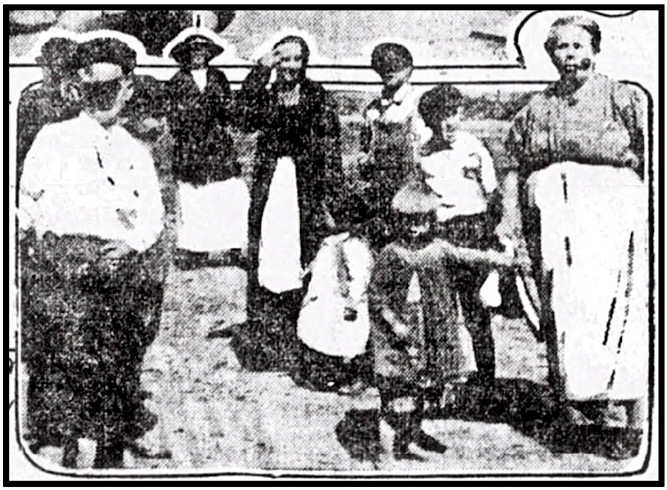 —————
—————
Hellraisers Journal – Saturday September 26, 1903
Cripple Creek District, Colorado – Imported Strikebreakers Escape to Union Hall
Report of Emma F. Langdon of Victor, Colorado:
51 STRIKE BREAKERS ARRIVE IN THE DISTRICT.
On Sept. 18 the much heralded strike breaking miners from the “east’’ arrived in Denver on their way to the district under heavy guard.
When the train carrying these men reached Cripple Creek the soldiers abandoned them, but the mine owners had places provided for their comfort. The newsboys followed them down the street and cried, “scab!” after them. This frightened the mine owners and a detachment of troops was immediately sent from Camp Goldfield to Cripple Creek, going over on the 9 o’clock electric low line from Victor. These soldiers were soon joined by two other companies of infantry and they lined Bennett avenue from First to Third streets and guarded the alleys more particularly. The soldiers’ headquarters were made at the Mining Exchange building, from where they received their orders. Citizens walking along the streets were told to move on and not to loiter.
The Finns and Norwegians, which constituted most of the men brought in—in fact, there was only two Americans among them—and very few who could speak English. The ones who could speak English stated that conditions had been misrepresented to them. They had just finished their work in the harvest fields of northern Michigan and were told that a new gold field had been opened here and that the mine owners wanted men badly. They were informed that in order to get men at once they would pay $3 for eight hours work and that the first men who responded would get the jobs. They were told further that if they did not like the work they would pay their expenses back to their homes and that it would not cost them a cent to get to the district.
There was eighty-seven in the crowd when they reached Denver, but twenty-six of the number pulled away in that city and about nine quit at Colorado Springs, leaving fifty or fifty-one to arrive in the gold camp.
STRIKE BREAKERS CONVERTED TO UNIONISM.
Eighteen of the men shipped into the district from Michigan were at union headquarters Friday night, Sept. 18, and stated that they would not go to work under the conditions here; that matters here had been grossly misrepresented to them. The balance of the fifty-one were taken to the Independence mine in the morning under heavy guard, but when they got to the mine they refused to go below. They were kept there all day and fed at Camp Goldfield.
On Saturday morning, Sept. 19, while the remaining twenty-three imported laborers were being escorted along Bennett avenue, Cripple Creek, by the military, the first shot of the “Cripple Creek District War” occurred when Lieutenant Hartung, of company B, took a shot at one of the imported Finns, Emil Peterson, who had been drawn off by the unions.
The strike breakers were being escorted from Miners’ Exchange hall to the depot by a detachment of company B. At the corner of Second and Bennett avenue Peterson broke through the lines and tried to talk to the strike breakers. He was ordered out by Capt. Frazier. As the man turned away he shouted in an excited manner, in his own tongue, to the others, and the captain called on Lieut. Hartung, “Arrest that man.” Peterson ran up the avenue, and Lieut. Hartung called, “Halt!” three times. The man increased his speed. The officer then sent a bullet after the man, who was now running like a frightened rabbit, his hat falling off in his mad rush for freedom and perhaps unionism.
Saturday morning unionists persuaded eighteen of the imported Finns to desert the mine owners, one of them being the man who was shot at by the lieutenant and whom the private sharp shooter offered to kill if the order was given. Peterson claimed that all of the strikebreakers were induced to come to Colorado by false representation, and the promise of high wages, from $4 to $5 a day being offered.

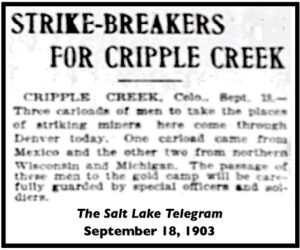
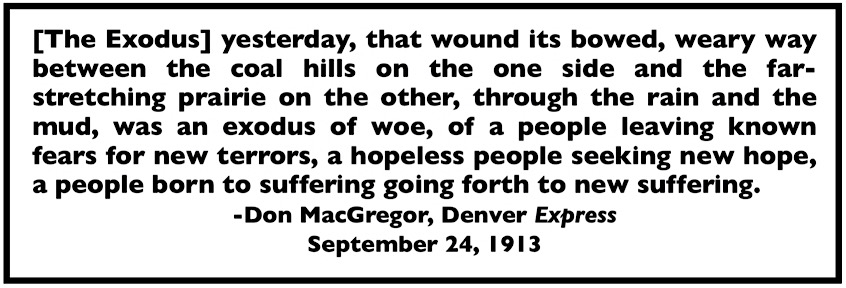 —————
—————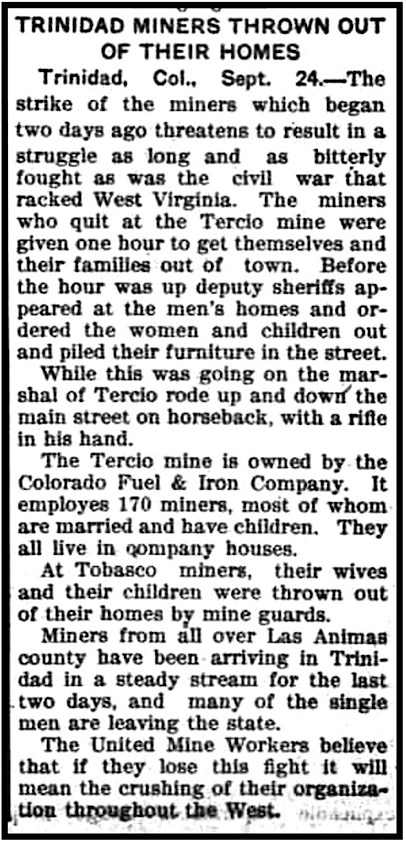
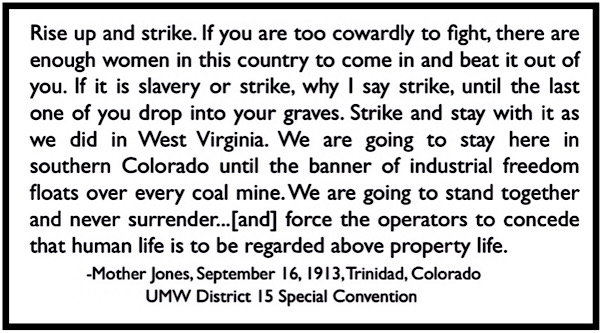 —————
—————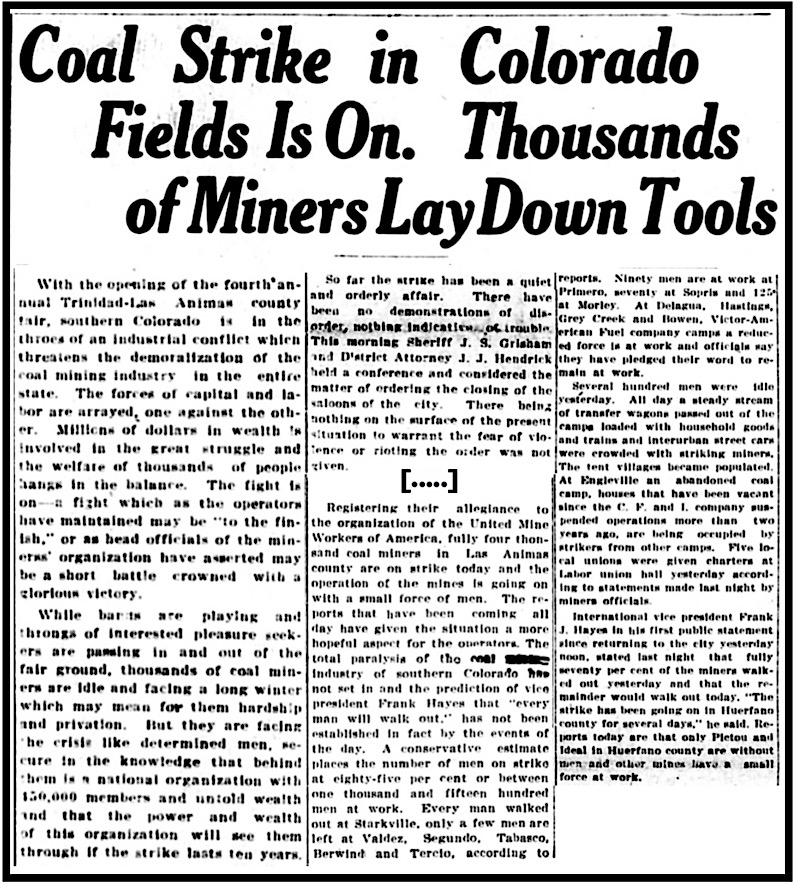
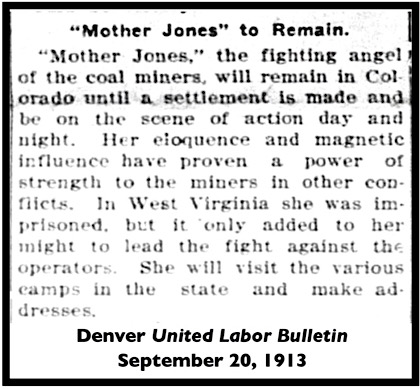 —————
—————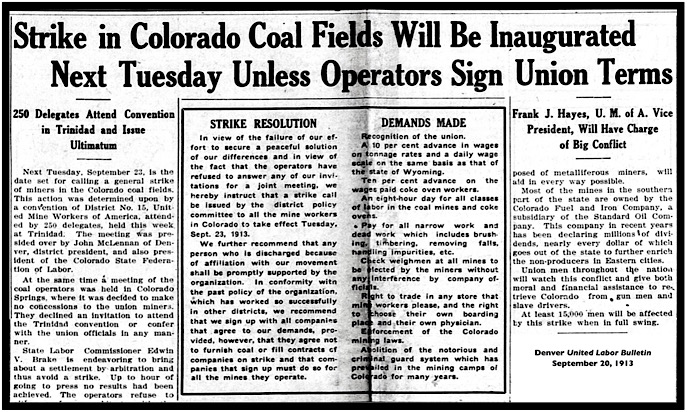
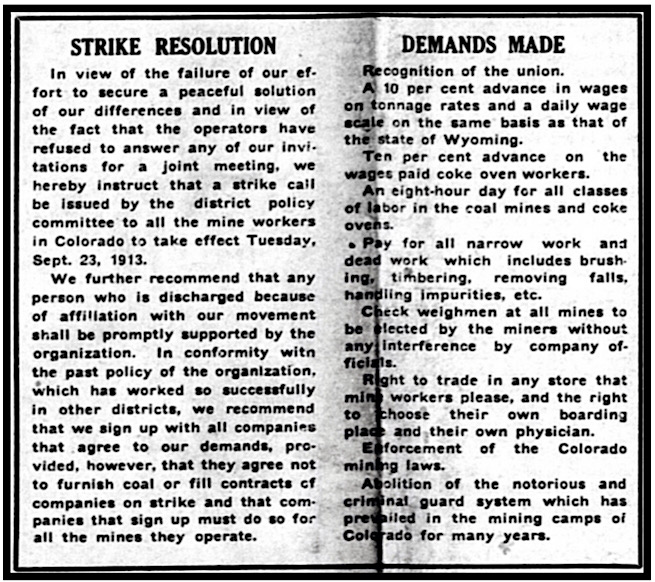
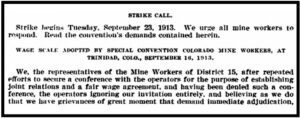 —————
—————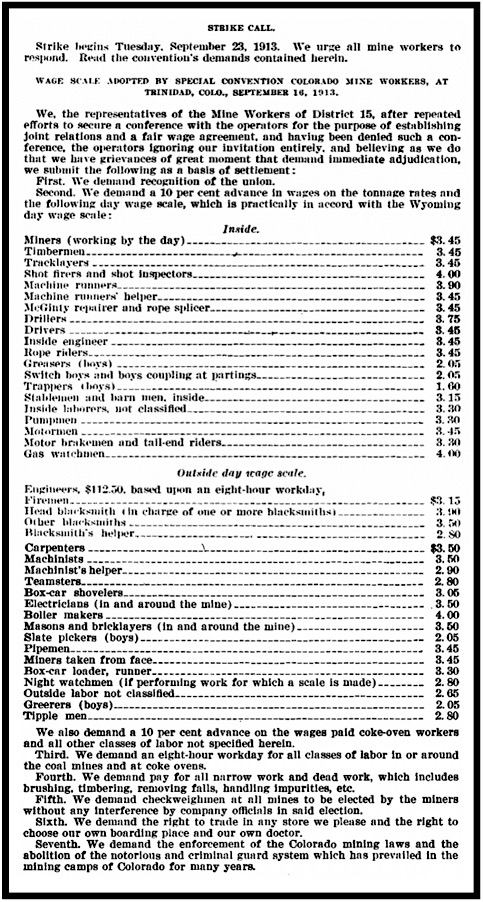
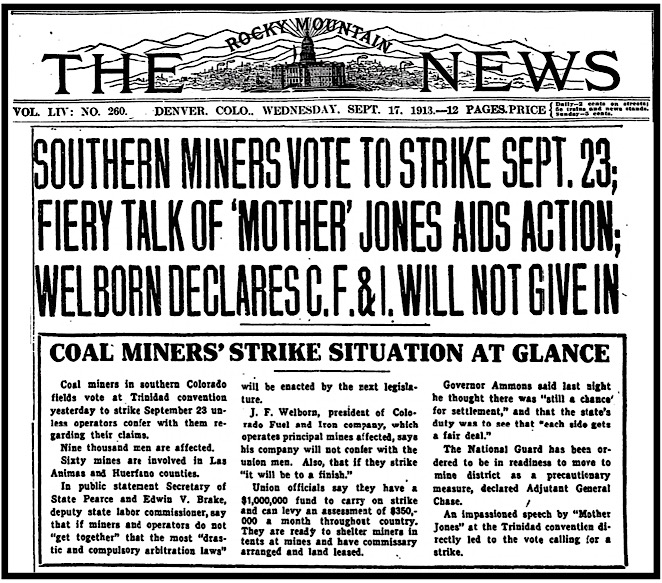
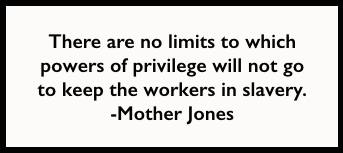 —————
—————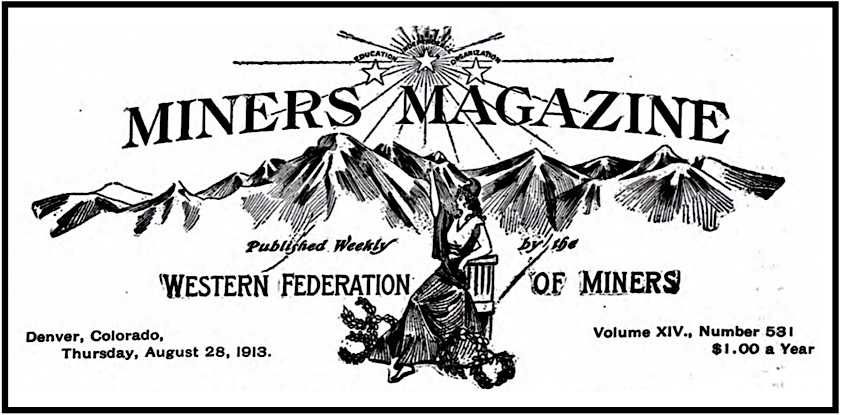
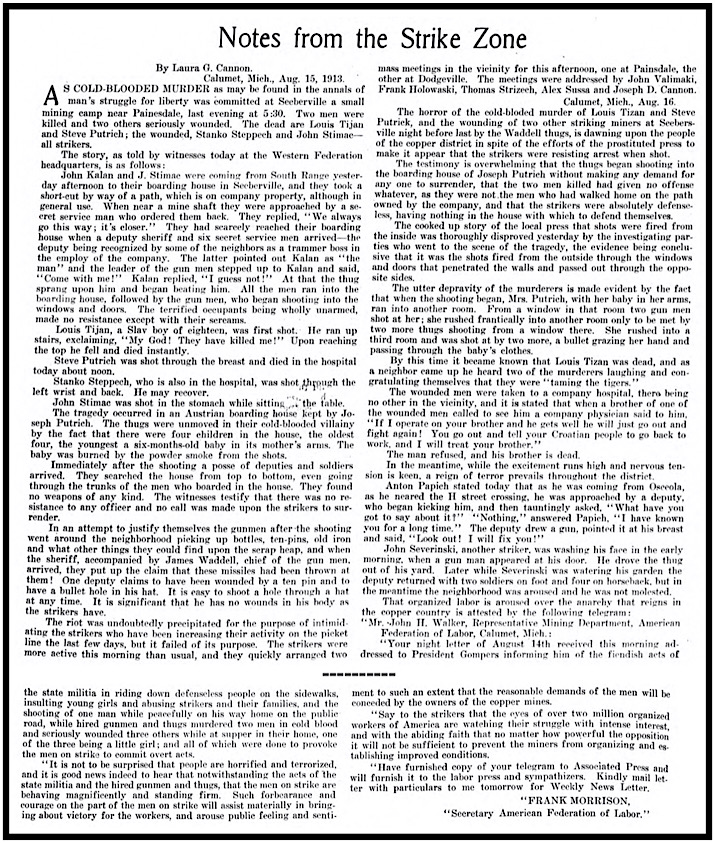
 —————
—————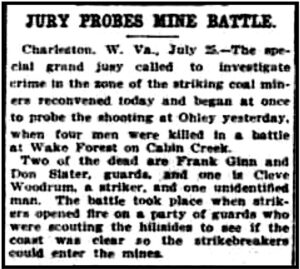
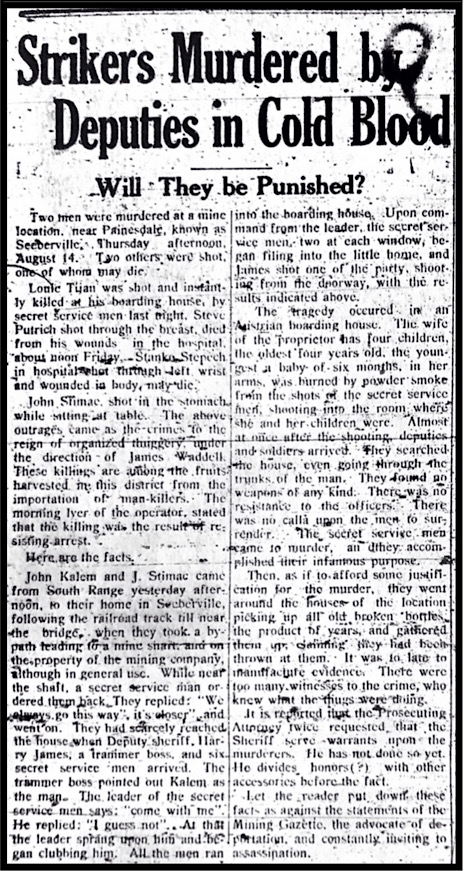
 —————
—————
